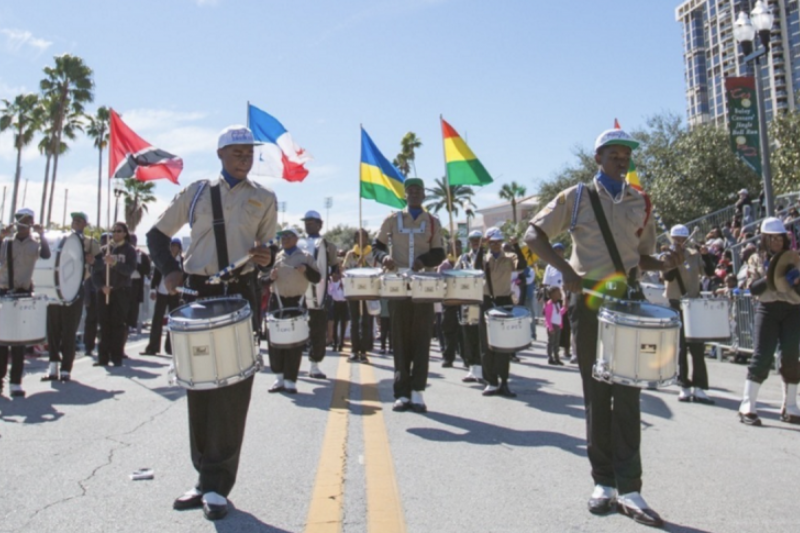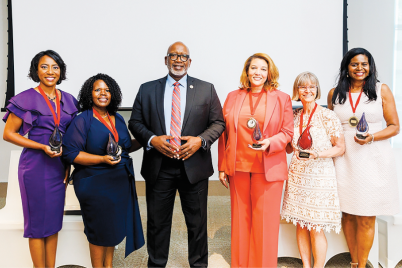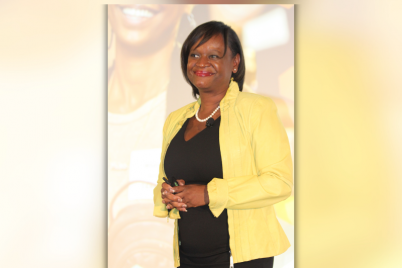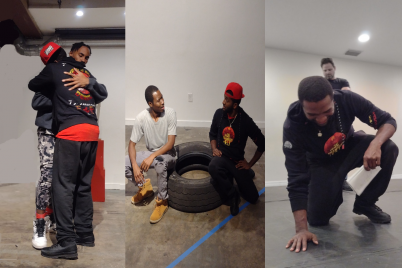By J.A. Jones | Staff Writer
PINELLAS COUNTY – The annual Arts & Economic Prosperity 6 (AEP6) report, produced by the nonprofit Americans for the Arts, is a national economic and social impact study of the nonprofit arts and culture industry. This is the sixth year of the report, and this year it had a focus on equity and inclusion.
AEP6 report also provides local breakdowns for regions where they could find local partners to support the survey distribution. In Pinellas County, Creative Pinellas, the county’s arts agency, supported the study. Pinellas County data showed:
- The arts and culture sector generated $294.7 million in economic activity during 2022—$126.8 million in spending by arts and culture organizations and an additional $167.9 million in event-related expenditures by their audiences.
- That economic activity supported 4,528 jobs, provided $185.3 million in personal income to residents, and generated $58.9 million in tax revenue to local, state, and federal governments.
- In Pinellas County, nonprofit arts and culture organizations spent an estimated $$126.8 million, which supported 1,919 jobs and generated $30.3 million in local, state, and federal government revenue.
AEP6 notes, “AEP6 included an expectation—for the first time—that our research partners would collect a portion of audience surveys from attendees to events that were presented, produced, or hosted by BIPOC (Black, Indigenous, People of Color) and ALAANA (African, Latine, Asian, Arab, Native American). organizations. There are many identities and communities that are marginalized, persecuted, and discriminated against across the nation. For the purposes of AEP6, we identified BIPOC and ALAANA organizations as a starting place, as the social construct of race has been historically pervasive and at the bedrock of prejudice since well before the 1700s.”
The study noted that when comparing responses from BIPOC and ALAANA organizations with other organizations, spending by attendees at BIPOC and ALAANA organizations was nearly identical to the overall national average ($38.29 and $38.46 per person, respectively). The report noted, “These findings should initiate critical funding conversations about BIPOC and ALAANA organizations receiving fair and proportional financial support.”
However, it also reports that, “A 2019 report by Americans for the Arts, for example, found that among local arts agency grantmaking organizations, the largest 16% of grant recipients (by budget) received 73% of the dollars awarded… Ensuring equitable funding for arts and culture organizations is a vital step in creating an inclusive, balanced, and vibrant cultural landscape.”
Margaret Murray, Creative Pinellas’ newly appointed executive director, shared, “The information contained in this report shows what we have always known — that there is no discernible difference in the level of economic engagement when we consider audiences of color and how they support cultural activities that speak to, and celebrate their lived experiences. This, to me, speaks to the need for equality in funding and opportunities for cultural institutions across our entire county.”
It was startling to discover that of the 72 nonprofit arts and culture organizations in Pinellas County that responded to the 2022 study, we could only find three led by BIPOC/ALAANA administrators – The Studio@620, Your Real Stories, and the Lao Arts and Cultural Foundation. (See list of responding organizations on the report, page 57: https://creativepinellas.org/wp-content/uploads/2023/11/Pinellas-County-Arts-Economic-Prosperity-6-Full-Report.pdf.)
Serendipitously, right now, Creative Pinellas is heading up CURRENT, the county’s Arts Coast Cultural Plan, to determine where and how the county should look to distribute its tourism dollars – which funds Creative Pinellas. Creative Pinellas distributes the finances through artist grants, exhibitions, summer camps, educational programs, partnerships, and events.
To put together the CURRENT Arts Coast Cultural Plan, Creative Pinellas is working with the Cultural Planning Group (CPG), a national firm specializing in cultural arts plan development for cities and counties. CPG will bring CURRENT to life with the help of an advisory group made of Pinellas County artists, leaders from the arts, community, business, tourism and civic sectors, the Pinellas County Board of County Commissioners and County Administration, Visit St. Petersburg Clearwater, and the Tourist Development Council.
We asked BIPOC members of the Cultural Plan’s advisory group to share how art impacts their families’ lives — or to share their thoughts on what BIPOC/ALAANA communities in Pinellas can do to raise their awareness and take advantage of the dollars, jobs, and industries benefitting from the hundreds of millions of local arts and culture dollars.
Dr. Kanika Tomalin, CEO of the Foundation for a Healthy St. Petersburg, relayed the importance of art in her own family. She shared that her son is a visual artist, her daughter has participated in performing arts, and they have both benefitted from their experiences. “Our city has evolved quite notably, especially over the past 25 years, to become a true City of the Arts, and that’s been very intentional,” noted Dr. Tomalin, relaying that the city’s local arts scene is strengthened by the contributions of its BIPOC.
“The vibrance of our arts scene makes our community a better, healthier, and stronger place to live,” she added, acknowledging how art contributes to an understanding of the human experience and provides meaningful outlets for self-expression. “Art can offer a unique opportunity, as well, for affirmation as a place where we can see ourselves and our emotions reflected and honored…and it’s important that all of our residents have access to the arts in some way, regardless of their race, their income, or their neighborhood.”
Artist, administrator, and entrepreneur Erica Sutherlin, who is poised to take over as artistic director at The Studio@620, responded that “it is not due to the lack of our (BIPOC/ALAANA organizations) advocating that there is scarcity of artistic opportunities and funding,” pointing to the failure of regional grant-making organizations and budget allocation committees to understand the economic value, impact and importance of the BIPOC/ALAANA dollar.
Sutherlin added that once grant-makers understand how these communities play vital supporting roles in tourism, economic development, public safety, and workforce advancement, they would see that financially supporting BIPOC/ALAANA organizations “is the only way we continue to foster and create diverse artistic, cultural experiences for the resident and the tourist.”
Patrick Arthur Jackson, director, producer, and manager of education, outreach, and program design at the Woodson Museum of Florida, responded: “We seem to be in a special season where BIPOC arts & culture are of interest to the larger community. I am hopeful that this surge of energy will spark collaborative efforts amongst the existing BIPOC organizations and independent artists to advocate for visibility and support from local government and regional/city arts organizations.”
Jackson added that advocacy includes attending arts advisory meetings, learning more about funding opportunities, and supporting the existing artistic efforts in the community. He noted that events like PDAP’s Afrofuturism Festival and programming by Mi Gente Mi Pueblo “should be bursting at the seams with support from the communities that they represent, but there is a drastic disconnection between the artistic creation and the importance of the need/support.”
Make your voice heard! You still have time to take the survey here: https://survey.alchemer.com/s3/7747722/Current-Arts-Coast









